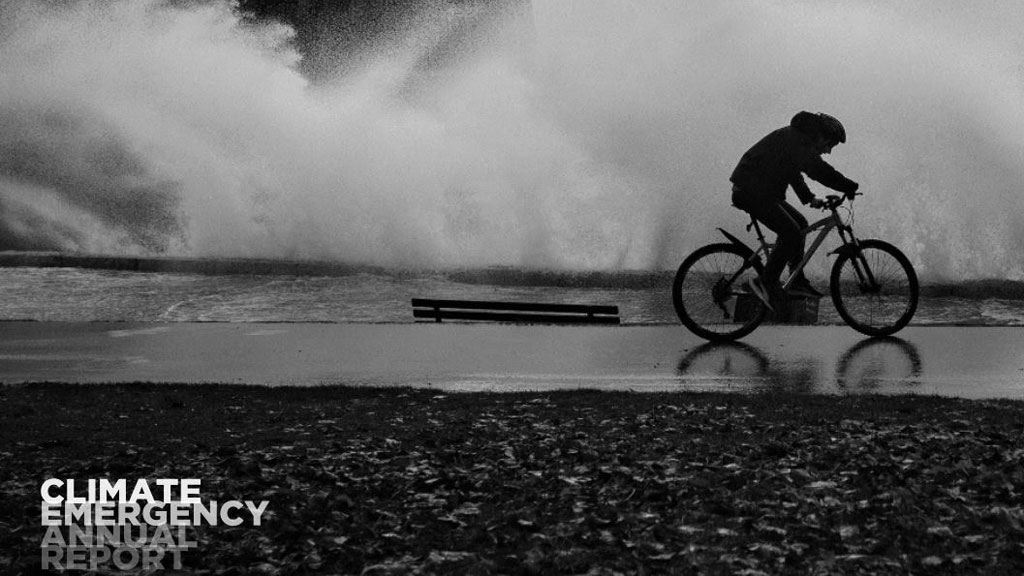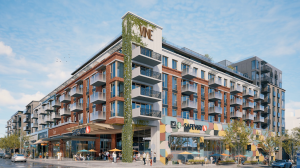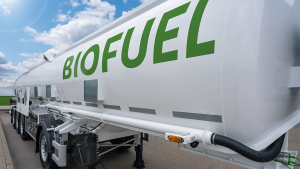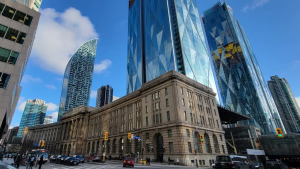┬ķČ╣┤½├ĮĖ▀ŪÕion is at the front of the pack when it comes to dealing with the climate emergency in Vancouver.
Of six ŌĆ£Big MovesŌĆØ in the City of VancouverŌĆÖs Climate Emergency Action plan only Big Move 5 ŌĆĢ low carbon materials and construction practices ŌĆĢ is on track to meet its 2030 targets, according to the .
The stated goal for this target is to reduce ŌĆ£embodied emissions from new buildings and construction projectsŌĆØ by 40 per cent compared to a 2018 baseline.
Vancouver climate policy manager Matt Horne said local developers and construction companies have certainly carried their weight.
ŌĆ£I think we do have a development community that is keen to try out solutions whether thatŌĆÖs less parking or more wood or lower carbon concrete. ThereŌĆÖs lots of innovation and interest in trying these ideas,ŌĆØ Horne said.
The city has also been doing what it can to give builders the room to bring innovative climate solution technologies into their projects.
ŌĆ£Starting a year-and-a-half ago, and through last year, weŌĆÖve made changes to the Vancouver Building Bylaw to remove barriers with mass timber buildings, for example. Where people want to try things, weŌĆÖre getting out of the way,ŌĆØ he said.
The city has also been increasing regulations around building requirements and, so far, the industry has been able to meet them.
ŌĆ£Last May, council approved, what we think were the first in North America, building standards to require reductions in embodied carbon,ŌĆØ he said.
ŌĆ£Those come in over the next few years so thereŌĆÖs time to adjust to them. But building them into the building code is a really core piece to the overall strategy.ŌĆØ
The city has stopped short of prescribing specific building materials, only a targeted reduction in emissions and embodied carbon, he said, but thereŌĆÖs one material on the rebound that stands out.
ŌĆ£We are definitely supportive of using more wood in construction and removing barriers wherever we can,ŌĆØ he said.
But part of the plan is giving builders the flexibility to meet carbon reduction targets in various ways.
ŌĆ£Where we have limits coming in on embodied carbon; if a developer wants a concrete building and wants to do that with a lower carbon concrete then thatŌĆÖs an acceptable way of meeting those targets. WeŌĆÖre not prescriptive on the outcome but weŌĆÖd love to see more wood buildings in the city.ŌĆØ
On the internal side of things, the city has implemented strict building codes for new public buildings.
ŌĆ£All new construction is being done with Passive House and zero emissions. WeŌĆÖre just in the tendering stage of some of the first low embodied carbon new construction.
ŌĆ£For existing buildings, wherever possible, weŌĆÖre doing major retrofits on systems (where) weŌĆÖre replacing those with zero emissions systems.ŌĆØ
Community centres and ice rinks have been focal points for this retrofit as two of the cityŌĆÖs bigger energy users, said Horne.
The Climate Emergency Annual Report outlines the likelihood for the city to meet itŌĆÖs 2030 goals as outlined in the Action Plan.
Big Move 1: complete walkable neighbourhoods, Big Move 2: active transportation and transit and Big Move 4: zero emissions space and water heating are all categorized as unlikely to meet their 2030 goals, the lowest rating applied.
One of the biggest barriers, particularly around active transportation infrastructure, is securing financing and a lack of reliable money to draw upon.
ŌĆ£A lot of those active transportation pieces are more grant funding compared to something like the Local Government Climate Action Program which is a very predictable source of funding that helps our climate work at a local level,ŌĆØ he said.
And some funding disappeared due to city council decisions.
ŌĆ£Councillors made some decisions to take some of the revenue tools we had identified off the table.ŌĆØ
Funding also plays into the importance of policy alignment across levels of government.
ŌĆ£The provincial government’s climate plan is CleanBC. We don’t see any pathway to hitting our targets without them also being successful with that plan,ŌĆØ he said.
Big Move 3: zero emissions vehicles and Big Move 6: restored coasts and forests were both listed as being at risk.
Overall, Horne said the climate report can be looked at with two different lenses: optimism and pessimism.
ŌĆ£The optimistic view is, looking back on 2022, I think across the scope of the Climate Emergency Action Plan we’ve got really good successes to point to on a project and a policy level,ŌĆØ he said.
ŌĆ£The pessimistic view, when we sort of step back and look at where we sit relative to our targets, is we’re not on track. That’s sort of the blunt truth of it. We really do need to continue accelerating.ŌĆØ
Building on optimism, Horne said the report is far from the final score and situations can always change.
Horne said itŌĆÖs possible some of the missed targets could be righted throughout the course of the year.
ŌĆ£I don’t think we have the potential to (get all categories on track) this year but we certainly can turn some of the (at risk) to (on target) and some of the (unlikely) to (at risk) with decisions that are on the horizon.ŌĆØ











Recent Comments
comments for this post are closed